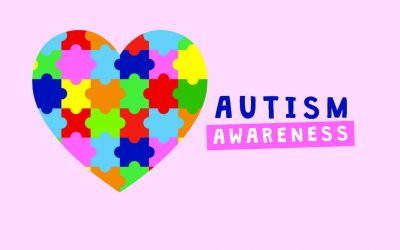One Child’s Story
by Stephen Shore
Note: This is adapted from an excerpt of a presentation USING MUSIC TO WORK WITH AUTISTIC CHILDREN on July 21, 1997 that I gave at the Allegro School in Cedar Knolls, New Jersey, USA. Since I was giving the speech, the text is in the third person. – Stephen Shore
Childhood
The final example involves a boy born in the early 1960s who seemed to develop normally until the age of about 18 months. His parents were very surprised find him turning over at only eight days. He was able to say “mama” and was developing verbal facility at a good clip. Then something happened. The crib was the only place where this child felt safe. This crib was also used as a trampoline. For the next year and a half, there was no speech, self-destructiveness, spinning around in circles with his finger in his ear, etc.
His physical development was extremely sophisticated for his chronological age. Questions filled his mother’s mind. She would call to him as he twirled in the backyard but there would be no response. If she went over and touched this child, he would grab her hand and go into the house for lunch. He was brought to the family pediatrician who said “He definitely not retarded; he may be autistic.”
At age two and a half, he was diagnosed as having strong autistic tendencies by a team of psychologically oriented professionals at a childrens’ center in the Boston area. The word “psychotic” was also mentioned. The center was reluctant to take on “such a sick boy” into their program and recommended institutionalization or foster care. The parents, believing that to be a suggestion with which they could not live, adamantly refused. The mother sarcastically said, “It is enlightening to know that they knew of these wonderful high-functioning psychologically oriented homes.” The center agreed to take this young boy in a year hence. For all we know, this year might have been too late under different circumstances.
This was the era of the single income family. Father went to work and Mother stayed home to do housework and take care of the kids. The older brother and sister went to school and this boy was home with his mother.
His mother took it upon herself to work with this kid. She attempted to get this enigma of a boy of hers to imitate her. No luck. She then tried imitating this child’s actions. Perhaps he would let her into his world by doing this. Then she would by able to draw him out of his world into hers. Slowly she was admitted entrance into his world. This approach was later used and written about by Barry Kaufmann in his book, _SONRISE_. The interesting thing is that his parents felt that this was the key to unlock the door before the Sonrise program existed.
Classical music played throughout the day as the mother hummed, sang, conducted and moved to the aural orchestra. There was much work to be done. Going into the supermarket overstimulated the child to the point of tears. There was just too much sound, too many people and vendors offering tasty but unwanted food. He would sit at the end of the driveway smashing open small rocks with a larger one and seemed to be fascinated by the shiny, speckled bits of quartz on the inside. This interest grew into a substantial rock collection… which had to be lined up in perfect order. The mother must have done something right because at age four, when the child was admitted to the Children’s Center, he was toilet trained and after a bought of echolalia, speech was well on it’s way. The Center found it hard to believe that this was the same child they had seen one and a half years earlier.
Other interests of great intensity continued to visit upon the child throughout his public school years and beyond.
Airplanes, Astronomy, Bicycles, Earthquakes, Medicine, Chemistry, Mechanics, Electricity, Electronics, Computers, Hardware, Tools, Psychology, Music, Rocks, Geology, Geography, Locks, Cats, Dinosaurs, Watches, Shiatsu, Yoga, Autism,
The child hated dogs, loved kittens and was terrified of the bathtub. A dog, with its unpredictable habits of barking and licking his face was too much to tolerate. Messy food was intolerable. The face and hands had to be wiped with a napkin after every bite. A breakthrough occurred at age five or six when the child was discovered to have made a royal mess of himself eating BBQ chicken wings followed by a huge piece of watermelon. The mother never thought she’d be so happy to see such a messy kid.
The child started public school kindergarten a year late. Public school at the elementary level was a disaster; both socially and academically. The other students sensed a difference and made life miserable for this child as is common for public school situations at this age. His teachers said that academics in math and reading were delayed. The first grade teacher said he would never be able to do math. Somehow, by adulthood, the child had figured out enough about mathematics to teach the subject at the college level.
The parents were taken aback by the second grade teacher who said their child couldn’t read. He was reading the newspaper at home. The reading comprehension assignments were a disaster. The interests listed just earlier held much more interest for the boy.
The Teenage Years
Things got better in junior high school and better yet in high school as the child discovered the music room and spent a considerable amount of time there. He had finished about 10 years of psychotherapy to exorcise the demons that created the autism. The counseling didn’t cure the autism but did prove helpful for dealing with the number that autism will do on a person’s psyche. For this reason only, I think therapy is good for dealing with the secondary issues that may arise from being autistic. However, the councilor needs to be aware of the sensory and other issues related to being on the autism spectrum — and maybe THAT’S why the child pulls away from his mother and NOT because the mother had inflicted some sort of psychological abuse.
When this boy entered college he felt he reached paradise there was now more tolerance of different people. The child-now turning into a man found others that could appreciate him for what he was. During the last years of high school and throughout college he turned his interest in bicycles into employment at a bicycle shop. He owned a small bicycle shop that was used to help pay for school.
This person still rides his bicycle everyday. His fascination with bicycles may have to do with that they have many spinning parts.
Once entering college, he never wanted to leave and still hasn’t as he continues to study at one college while teaching at another one. The structure of the school day suits him well. At the undergraduate level he obtained two bachelor’s degrees simultaneously:
1. Music Education
2. Accounting & Information Systems
This person drove his advisors and several administrative offices crazy as none of them could figure out what the heck he was doing. This student was the only one at his school to do get these two degrees at the same time and graduated with the third highest number of credits of anyone in the school. 224 credits to be exact.
Employment and Beyond
After leaving school he went to work at an accounting firm, from which he was let go after three months. Riding his bicycle to work and changing into his suit at the office was too weird for them. The place was riddled with nuerologicaly typical (NT) people of a most virulent sort. This fellow then worked at a large bank for the next year and a quarter but was unhappy there. “I love the study of business, accounting and taxation but I can’t stand working with the type of people who choose these areas for their careers,” he said.
He left the bank to teach in a business vocational school, which was fine. During this time he returned to school to work on a masters in music. This person taught computers, math and business related courses to support his music habit. After finishing the masters and while working on the doctorate he managed to get a college teaching job as a full-time music instructor. Once again, paradise which was lost, had been found. He is still very happy at this place.
He is now married, finishing a doctoral degree and as mentioned above, teaches music at the college level.
Social situations and always doing what is appropriate can still be issues at times. However, he is now living a personally meaningful and productive life.
That person is speaking before you right now.
————————————————————————
Family History
My paternal grandfather (died at age 76) was prone to depression. He was a lawyer, businessman and into real estate. My mother (b. 1938) is a recovering agoraphobic, she went to business school but never finished due to her dislike of the subject and her increasing agoraphobia. She underwent multiple years of psychotherapy until Dr. David Sheehan in Boston discovered Nardil to correct this disorder. Current research shows that Autistic traits run in families and I can see many of those traits in my mother. She says she saw them in her father.
My brother (b. 1959) is mildly retarded. He spent his public school days in special education rooms. He cleans tables at a local Papa Ginos. His reading is restricted to survival reading only. He can copy text and type it out but he can not do simple arithmetic or write under his own power. My brother had a period of drop seizures during puberty but which have now subsided. He does, however, have a phenomenal memory and notices any small changes in his environment. I wonder how much of his disorders are caused by retardation and whether some of them are caused by Autism.
My sister (b. 1957), father (b. 1932) and maternal grandmother (b. 1908) are pretty normal NT type of people.
Marriage Stuff
I have been married since 1990 to a Chinese woman (b. 1959). We met in music school. She is an accomplished musician. My wife doesn’t understand what Autism is about but still accepts me for who I am and the many idiosyncracies that I have. I am fourth-generation American and Jewish. This brings up the topic of socialization. I have always gotten along better with people who are not my own age or nationality. Perhaps that is because I don’t fit into what the typical NT white American would expect. People of different ages and cultures then mine may not know all of subtleties of how I’m “supposed” to act and thus accept me for who I am.
—————————————————————–
**** Update: Currently the author has finished writing Beyond the Wall: Personal Experiences with Autism and Asperger Syndrome (2001, Autism Asperger Publishing Company). Using the autobiographical form, observations from working with people on the autism spectrum and other realizations are woven throughout the book. Stephen Shore is now enrolled in a doctoral program in special education with a concentration on helping people on the autism spectrum reach their fullest potential.


